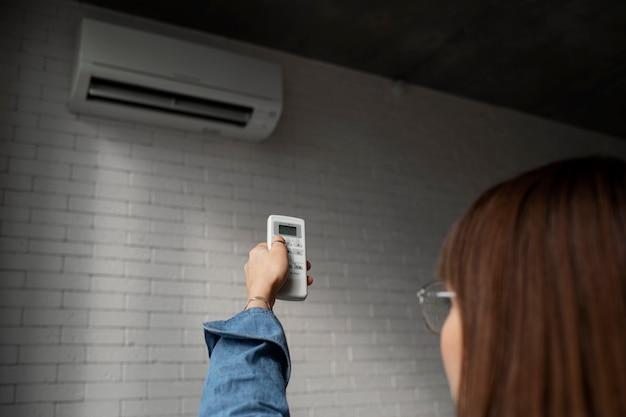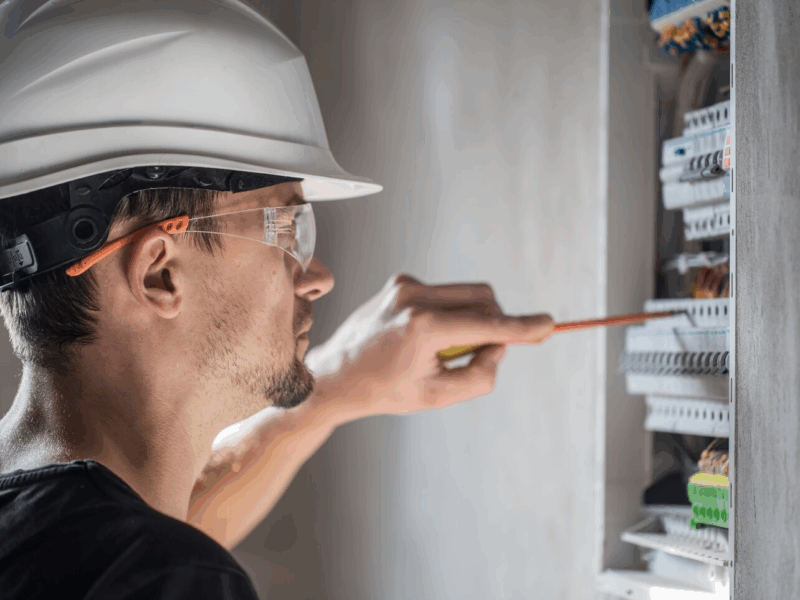Air conditioning is crucial for staying comfortable indoors, especially when the heat during summer becomes unbearable. However, AC systems can suddenly malfunction, which is frustrating and uncomfortable for homeowners. In case of a malfunction, you can call a repair person, but you can seek out simple issues that can be solved quickly.
According to the U.S. Department of Energy, regular maintenance can improve an AC’s efficiency by up to 15%. One of the most common problems, such as dusty condenser coils or loose electrical connections, can be repaired without hiring a professional. Then, why spend money on costly repairs when a check-up would be enough?
This troubleshooting guide will help you find and resolve minor AC issues. You’ll discover how to clean the condenser coil, inspect electrical connections, and check refrigerant levels.
With these easy steps, you can maintain your AC in optimal working condition.
1. Inspect and Clean Your Condenser Coil
Ocala locals understand the need for air conditioning in the extreme heat of Florida summers. The heat can be unforgiving, and AC maintenance is vital for your health and well-being. When your AC is not working correctly, it would be worthwhile to check your condenser coil first before even looking for air conditioner repair in Ocala.
Your condenser coil maintains your home’s temperature. It is located in your outdoor unit and releases your home heat into the outside environment. Over time, buildup from dust, debris, and leaves causes your coil to work harder and less efficiently. In most situations, cleaning this vital unit can boost your efficiency.
How do you check and clean? First, turn off the power to your AC unit in the breaker box to check your condenser coil. Next, remove any debris visible around your unit. You can use a garden hose with medium pressure to spray the outside of the condenser coils. Start from the top and spray downward so delicate fins do not bend.
Furthermore, you should trim any bushes obstructing airflow around your unit. This simple maintenance routine can greatly help your unit become more efficient and provide more cooling.
2. Check Your Electrical Connections for Looseness
Loose wires are a serious AC problem that can cause significant issues. Your AC comprises many wires with terminals that loosen over time due to vibration. Loose wires can cause your unit to operate in spurts and stop working periodically.
To inspect for loose wires, switch your AC power off at the breaker box before inspecting any electrical components. Your safety is the number one concern when dealing with electric power. Look for loose connections or burned contacts. You can also shake wires back and forth to determine if they’re loose. If any exist, you should tighten the loose connections.
3. Check for Refrigerant and Oil Leaks
Refrigerant leaks lower the cooling capability of your AC and can damage your system if left unchecked. Oil leaks, likewise, signal mechanical problems that should be investigated. Knowing how to spot these leaks will help you to understand when to hire professionals.
To inspect refrigerant leaks, you must examine the copper pipes between your outdoor and indoor units. Look for oily spots, which typically mean that your refrigerant is leaking. You can also look for ice forming around your refrigerant pipes. Another sign is bubbling and hissing sounds around copper pipes. Your AC might function with a minor leak, but it won’t be cooling as it should.
Additionally, oil leaks can be seen as dark spots around your compressor or beneath your outdoor unit. Leaks are internal mechanical issues that a professional must repair. While searching for leaks, check all exposed refrigerant lines for damaged insulation, as damaged insulation results in energy loss and inefficiency.
4. Inspect Your Air Conditioner Blower Belt
The blower belt powers the fan that blows air through your ducts. A misplaced or worn belt forms unusual noises and decreases airflow.
To check your blower belt, first cut power to your AC system. Then, remove your air handler or your indoor unit’s access panel. Look for the belt connecting your motor and your blower. Check the surface of your belt for glazing, fraying, or cracks. Your belt should barely give when pushed with your finger. Excessive give means that your belt should be adjusted.
5. Check Your Coil Temperatures and Expansion Valve
The difference in temperature between your evaporator and your condenser coils reveals a lot about your AC’s health. Likewise, your expansion valve regulates refrigerant passage and directly affects cooling capability. Therefore, the examination of these components identifies efficiency problems.
Moreover, when your unit operates properly, its evaporator coil should feel cold. To inspect this coil, locate your indoor unit and touch a larger copper line. This more extensive copper line should feel cold and have a moisture buildup.
Conclusion
Self-troubleshooting your AC before hiring a repair service saves time and money by uncovering minor issues that can be fixed independently. Simple maintenance, such as cleaning the condenser coil and securing electrical connections, ensures optimal operation and prevents costly breakdowns. Checking for refrigerant and oil leaks helps in early diagnosis, reducing the possibility of expensive system damage.
Moreover, periodic checking of the blower belt and monitoring coil temperatures also assist in efficient cooling and prolonged AC longevity. While these steps can repair most issues, professionals must handle complications like refrigerant leaks. Thus, knowing when to use experts or self-troubleshooting maintains your AC in optimal shape and efficient operation.


